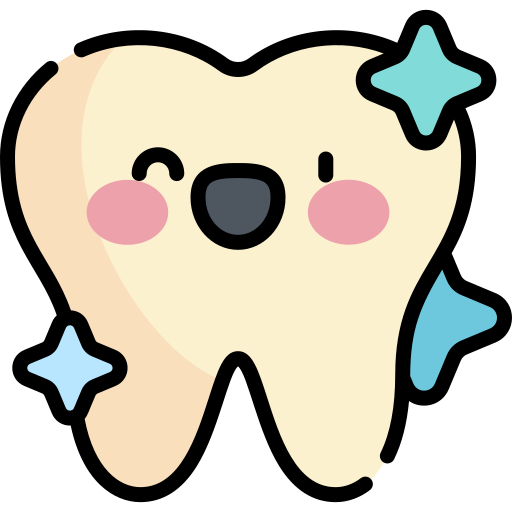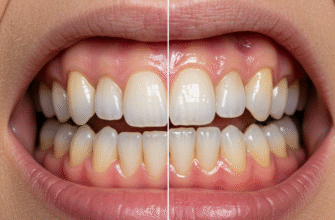Journey with us beyond the gleaming surface of your smile, past the hard, protective enamel, and you’ll discover a remarkable material that forms the very heartwood of your tooth: dentin. It’s a tissue often overlooked, yet it’s fundamental to your tooth’s strength, resilience, and even its ability to feel. Think of enamel as the tooth’s armor, but dentin is the substantial, living core that gives it form and function, playing a far more dynamic role than many realize.
Understanding Dentin’s Place in the Tooth
Dentin is strategically positioned, forming the bulk of the tooth structure. It lies directly beneath the enamel in the crown portion of the tooth (the part visible above the gum line) and beneath a layer called cementum in the root portion (the part anchored within your jawbone). This means dentin encases the innermost part of the tooth, the pulp, which houses nerves and blood vessels. Its presence is not just incidental; it’s a carefully orchestrated design that allows the tooth to withstand the daily rigors of chewing and protect the sensitive pulp tissue within.
A Substantial Contributor
Unlike the relatively thin layer of enamel, dentin makes up the largest portion of the tooth. Its thickness varies from tooth to tooth and even within different areas of a single tooth, but its substantial volume is critical. This bulk provides essential structural support, preventing the more brittle enamel from fracturing under pressure. Without the supportive, slightly more flexible dentin layer beneath, enamel would be far more prone to chipping and cracking.
The Building Blocks: Dentin’s Composition
Dentin is a complex, mineralized connective tissue, a fascinating blend of mineral, organic material, and water. By weight, it’s approximately 70% inorganic material, primarily in the form of hydroxyapatite crystals. These crystals are similar to those found in enamel and bone, but in dentin, they are smaller and less densely packed than in enamel. This difference contributes to dentin being softer than enamel but harder than bone or cementum.
The Mineral Matrix and Organic Framework
The inorganic hydroxyapatite provides dentin with its hardness and rigidity. Interspersed within this mineral matrix is the organic component, making up about 20% of dentin by weight. The primary organic constituent is collagen, specifically Type I collagen fibers. These fibers form an intricate meshwork that serves as a scaffold for the deposition of mineral crystals. Think of it like reinforced concrete: the collagen is the rebar, and the hydroxyapatite is the concrete. This combination gives dentin a degree of flexibility that enamel lacks. The remaining 10% is water, which is found within the organic matrix and the microscopic tubules that traverse the dentin.
A Microscopic Maze: The World of Dentinal Tubules
Perhaps the most distinctive feature of dentin is its microscopic structure. It’s not a solid, homogenous mass; instead, it’s permeated by countless tiny channels called dentinal tubules. These tubules radiate outwards from the pulp cavity towards the enamel or cementum junction. Imagine a vast network of microscopic tunnels, each incredibly small yet playing a vital role. Their density is astonishing, with tens of thousands per square millimeter, being more numerous and wider closer to the pulp.
Within these tubules lie the extensions of specialized cells called odontoblasts, known as odontoblast processes. These processes extend from the main body of the odontoblast cells, which line the outer surface of the pulp. The tubules also contain dentinal fluid, a fluid that is thought to be an ultrafiltrate of blood from the pulp. In some tubules, particularly those closer to the pulp, nerve fibers may also be present, contributing to tooth sensation.
Dentin constitutes the main body of the tooth, a living tissue that is harder than bone but significantly softer than the overlying enamel.
Its unique tubular structure is key to its properties, allowing for the transmission of stimuli and providing a pathway from the tooth’s exterior to the pulp.
This intricate architecture underscores the complexity and vitality inherent in each tooth.
Surrounding each individual tubule is a cuff of highly mineralized dentin called peritubular dentin. The bulk of the dentin found between the tubules is known as intertubular dentin, which is less mineralized than peritubular dentin but still rich in collagen.
How Dentin Comes to Be: The Process of Dentinogenesis
Dentin formation, or dentinogenesis, is a meticulously orchestrated process carried out by specialized cells called odontoblasts. These cells originate from the dental papilla, a mesenchymal tissue that eventually forms the tooth pulp. Odontoblasts are true artisans, laying down the organic matrix of dentin, primarily collagen, which then undergoes mineralization.
The Master Builders at Work
Dentin is formed in layers, with new dentin being deposited along the pulpal surface, gradually moving inward and reducing the size of the pulp chamber over time. The very first layer of dentin formed is called mantle dentin. It’s found at the outermost edge, just beneath the enamel or cementum. Mantle dentin is slightly less mineralized and has a slightly different collagen fiber orientation compared to the rest of the dentin. Following the formation of mantle dentin, the odontoblasts begin to produce circumpulpal dentin, which forms the bulk of the primary dentin and surrounds the pulp chamber. This process continues until the tooth is fully formed.
Varieties of Dentin: Not All Dentin is Created Equal
Dentin isn’t a single, uniform material throughout life. Based on the time of its formation and its structure, it can be classified into different types, each with specific characteristics.
Primary Dentin: The Original Structure
This is the dentin formed before the completion of the root apex (the tip of the root). It constitutes the main body of the tooth and includes both the mantle dentin and the circumpulpal dentin laid down during tooth development. It outlines the initial shape of the pulp chamber and root canals.
Secondary Dentin: A Lifetime’s Work
After the tooth root is fully formed and the tooth has erupted into function, dentin formation doesn’t entirely cease. Secondary dentin continues to be laid down, albeit at a much slower rate, throughout the life of the tooth. It’s deposited on the pulpal side of the primary dentin, leading to a gradual, physiological reduction in the size of the pulp chamber and root canals. This is a normal aging process. Secondary dentin has a similar structure to primary dentin but its tubules may show a slightly more irregular pattern.
Tertiary Dentin: The Repair Crew
Sometimes referred to as reparative or reactionary dentin, tertiary dentin is formed in localized areas in response to various stimuli or irritants. These stimuli could include things like advancing dental caries, mechanical trauma (like a chip or crack), tooth wear from grinding, or even certain dental procedures. It’s the tooth’s way of trying to protect the pulp by laying down an additional barrier. There are two sub-types: reactionary dentin, which is formed by pre-existing odontoblasts that survive the injury and are stimulated to produce more dentin, and reparative dentin, which is formed by newly differentiated odontoblast-like cells when the original odontoblasts in the affected area have been damaged or have perished. Tertiary dentin is often more irregular in structure than primary or secondary dentin, with fewer and less organized tubules.
Key Characteristics of Dentin
Dentin possesses several properties that are crucial to its function and the overall health of the tooth.
A Hint of Color
While enamel is translucent, dentin has a natural yellowish hue. The color of a tooth is largely determined by the color of the dentin shining through the overlying enamel. As enamel thins with age or wear, the yellower dentin can become more apparent, influencing the tooth’s overall shade.
A Porous Nature
Thanks to its network of dentinal tubules, dentin is a permeable tissue. This permeability means that fluids, chemicals, and even microorganisms can potentially pass through it. While this allows for nutrient exchange and sensory transmission from the pulp, it also means that if the protective enamel or cementum is lost, the exposed tubules can become pathways for stimuli that cause sensitivity or for bacteria to reach the pulp.
Strength and Flexibility
As mentioned, dentin is harder than bone but softer and more elastic than enamel. This elasticity is vital. It provides a resilient foundation for the brittle enamel, absorbing and distributing the forces of chewing, which helps to prevent enamel fractures. It acts like a shock absorber for the tooth.
Dentin’s Crucial Roles in Tooth Health
The intricate structure and unique properties of dentin allow it to perform several critical functions within the tooth.
The Guardian of the Pulp
One of dentin’s primary roles is to protect the delicate pulp tissue. It forms a robust physical barrier between the pulp and the external environment or the overlying enamel. The continuous, albeit slow, formation of secondary dentin and the reactive formation of tertiary dentin further enhance this protective capacity throughout life.
Sensing the World
Dentin plays a key role in tooth sensitivity. The most widely accepted explanation for dentin sensitivity is the hydrodynamic theory. This theory proposes that when dentin is exposed (due to enamel loss, gum recession, etc.), external stimuli like temperature changes, sweet or sour foods, or even touch can cause movement of the fluid within the dentinal tubules. This fluid movement is thought to stimulate nerve endings located near the pulp or within the tubules themselves, leading to the sensation often perceived as sharp and sudden. This sensory function, while sometimes uncomfortable, can also serve as an early warning system for the tooth.
Dentin, therefore, is far more than just passive filler material. It is a dynamic, living tissue that is integral to the tooth’s development, its ability to withstand daily use, its capacity to respond to injury, and even its appearance. Understanding the core of your tooth reveals a beautifully complex system designed for longevity and function, highlighting the marvel of natural engineering within every smile.








